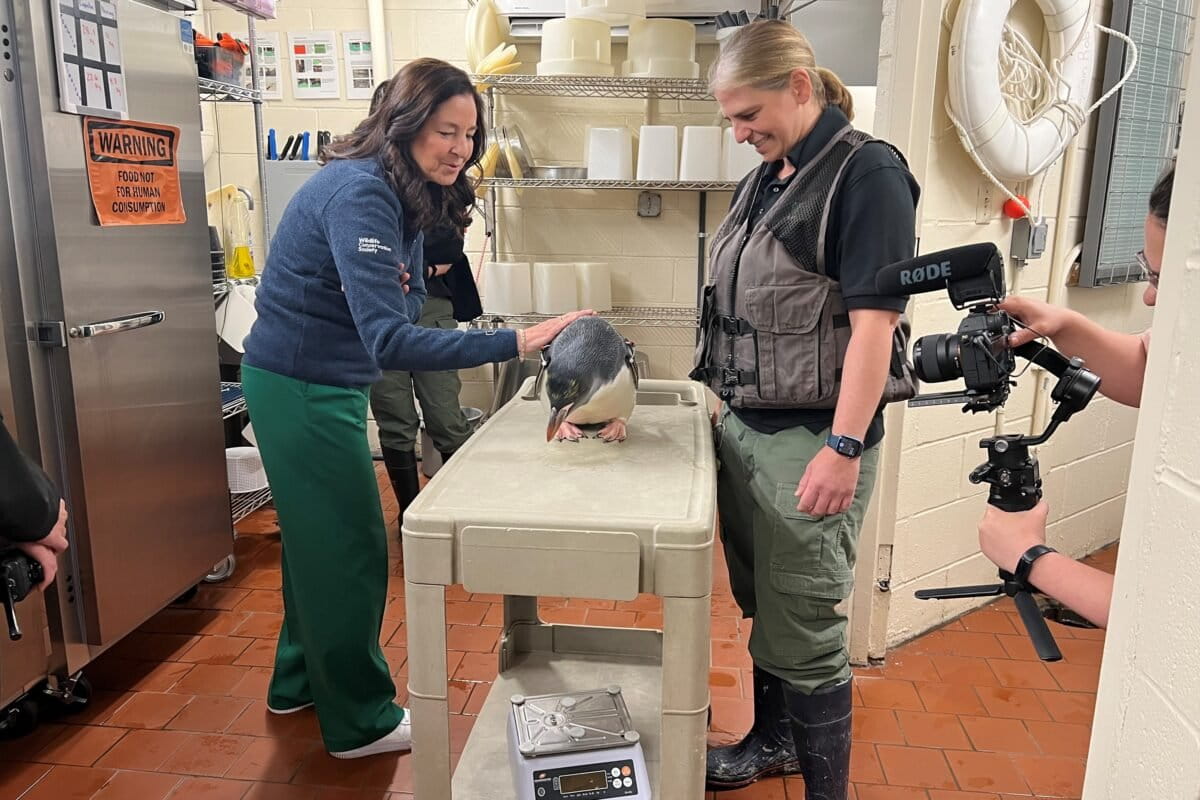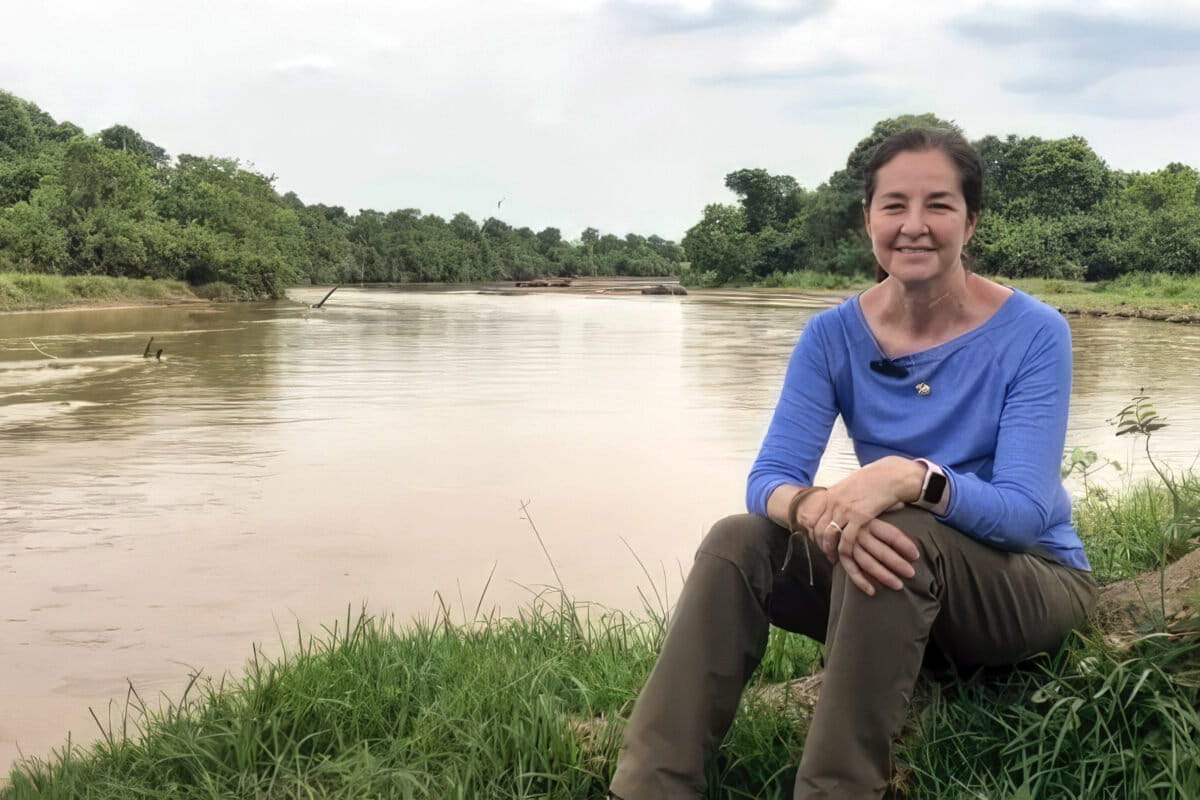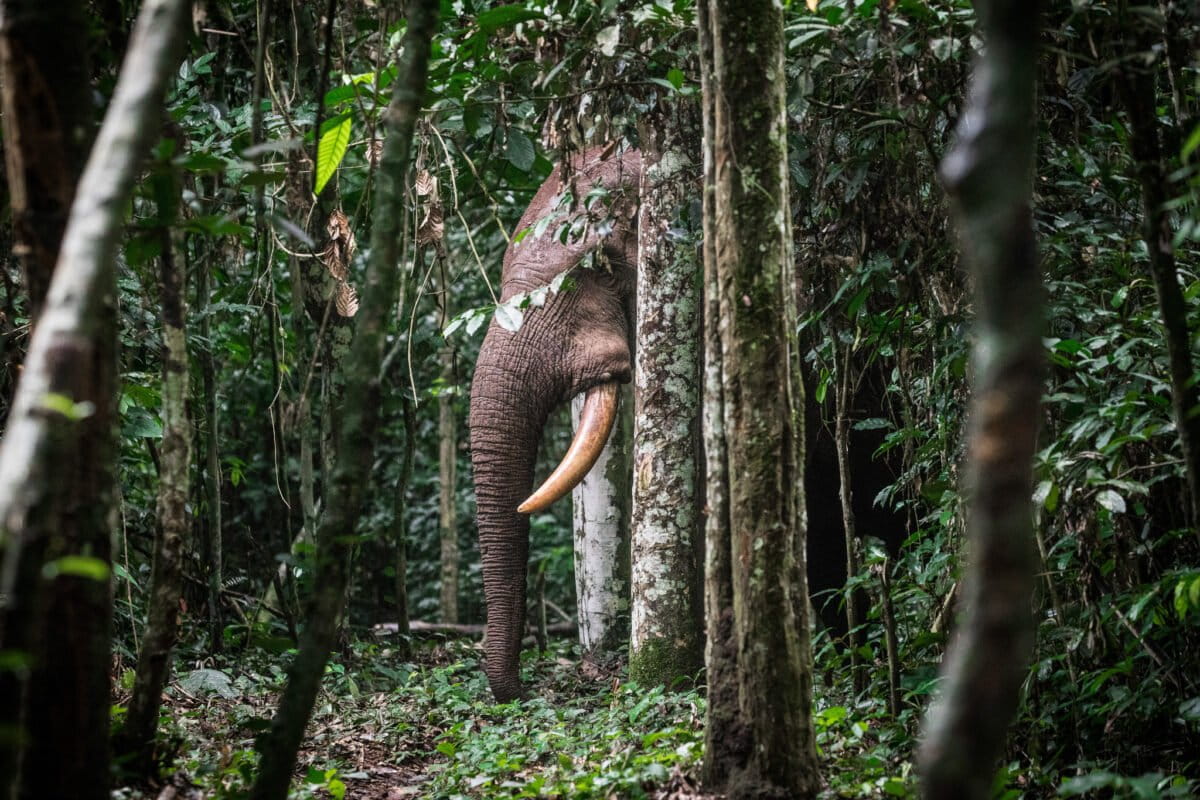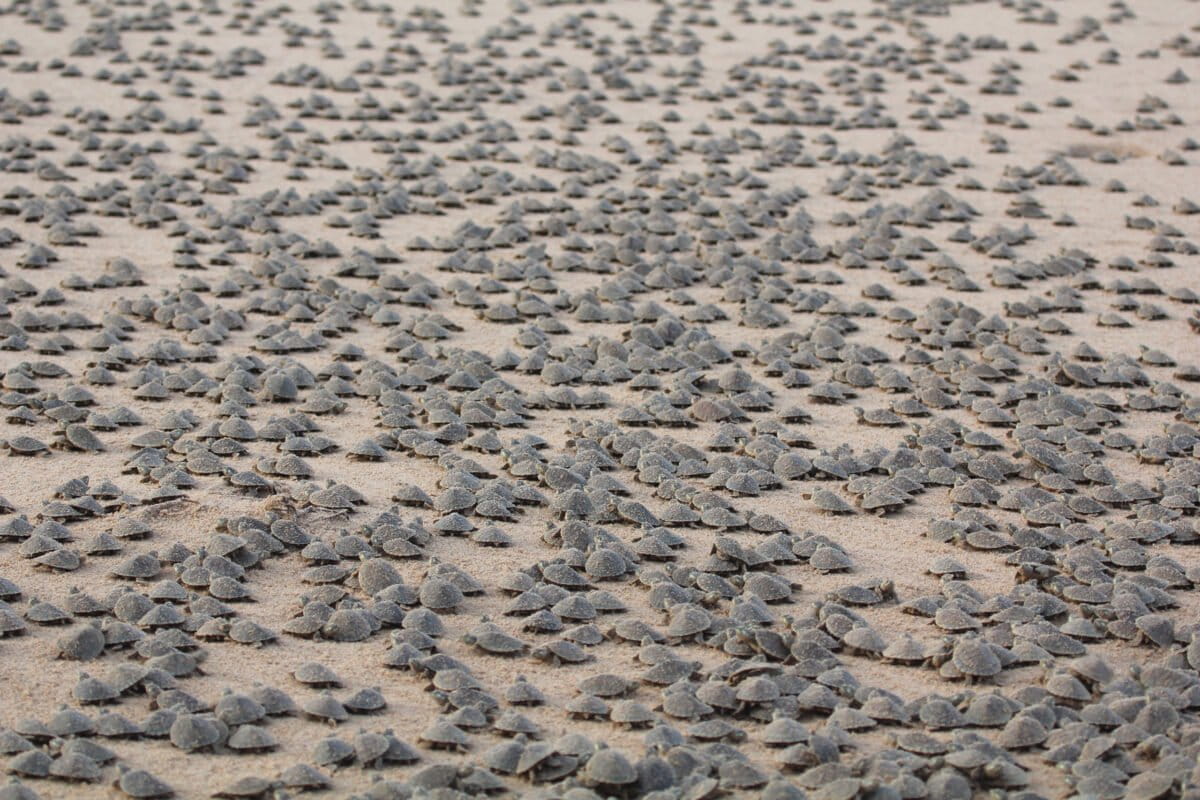- Last month, Monica Medina became the President and CEO of the Wildlife Conservation Society (WCS). She is the first woman to lead the organization, which operates conservation projects in some 50 countries and runs a network of zoos and an aquarium in New York City.
- Medina has demonstrated a long-standing dedication to environmental issues and conservation across numerous roles spanning the private and public sector, including service in three presidential administrations since the 1990s.
- In a recent exchange, Medina spoke with Mongabay’s Founder and CEO Rhett A. Butler about her career journey and her aspirations for WCS.
- “We must never assume that a healthy planet is automatic. We can never take it for granted,” she said. “The Earth is our garden and we must always tend it. That is the responsibility of every generation and everyone everywhere. We will not have a healthy planet unless we work together—young and old all around the world—because conservation and environmental issues are intergenerational and global.”
In June, the Wildlife Conservation Society (WCS) announced Monica P. Medina as its new President and CEO.
Medina is the first woman to take the helm at WCS and brings with her a wealth of experience from numerous esteemed roles across a variety of institutions, including key leadership positions in three presidential administrations.
It’s easy to get lost in the breadth and depth of Medina’s accomplishments. However, outlining her credentials sheds light on why WCS — a conservation organization known for its diverse operations that span place-based projects worldwide and a network of zoos and an aquarium in New York City — chose her as their leader.

Medina began her illustrious career as an active-duty officer in the Army and then served as senior counsel to the United States Senate Committee on Environment and Public Works. She later joined the Clinton administration, where she held positions as the deputy associate attorney general at the Department of Justice, overseeing the Environment Division, and as the general counsel of the National Oceanic and Atmospheric Administration (NOAA).
After her tenure in government, Medina ventured into marine law and policy with the Pew Environment Group and the International Fund for Animal Welfare (IFAW). She also practiced law at Heller Ehrman.

Subsequently, in the Obama administration, Medina took on roles as the principal deputy undersecretary for oceans and atmosphere at NOAA and the U.S. Commissioner to the International Whaling Commission. In these capacities, she tackled issues such as Arctic conservation, restoration efforts after the Deepwater Horizon oil spill, fisheries management, and various species conservation initiatives.
After the Obama era, Medina transitioned to work alongside the U.S. Secretary of Defense, Leon Panetta, focusing on combating discrimination against women in the military and addressing sexual assault.
Her journey then led her to the National Geographic Society as the senior director of ocean policy, and later to the Walton Family Foundation as the deputy director of the environment program. Medina showcased her versatility by diving into media; she managed Our Daily Planet, an environmental newsletter, and frequently contributed opinion pieces to high-profile publications such as The New York Times, HuffPost, The Hill, and USA Today, ardently voicing her support for environmental policies like the Green New Deal.

In 2021, Medina’s efforts in the Biden Administration saw her serve as the Assistant Secretary of State for the Bureau of Oceans and International Environmental and Scientific Affairs. Notably, she spearheaded the push to conserve 30 percent of global lands and seas, a goal later adopted in the 2022 Kunming-Montreal Global Biodiversity Framework. Moreover, she was instrumental in advancing policies to curb plastic pollution and driving negotiations on the U.N. agreement to protect marine biodiversity in international waters.
Medina’s diverse experience spanning government, media, philanthropy, civil society, academia, private legal practice, and the military, has positioned her well to lead WCS, with its multifaceted conservation objectives.
Medina recently spoke with Mongabay’s Founder and CEO Rhett A. Butler about her career journey and her aspirations for WCS.

AN INTERVIEW WITH MONICA MEDINA, PRESIDENT AND CEO OF WCS
Mongabay: What ignited your interest in environmental issues?
Monica Medina: My passion for environmental issues comes from my legal background and the important people in my life. While getting my law degree at Columbia University, I loved learning how groundbreaking environmental laws were inspired by the political movements of my childhood. The United States has some of the strongest set of environmental laws (i.e. Clean Air Act, Clean Water Act) in the world, and they are still effective today, even decades after they were enacted.
I was also inspired by my mother’s passion for animals—she taught her middle school students about the scientific method and the natural world by bringing them to Zoo Atlanta. And even more personal to me was my daughter’s struggle with serious asthma as a child. That experience made me a zealous advocate for the strong implementation and enforcement of environmental laws to protect her and others who struggle with pollution and other health impacts of environmental degradation.
Mongabay: You have spent more than 30 years in the environmental sector. Could you describe the significant differences you’ve noticed in the field from the time you started to the present day?
Monica Medina: Many of today’s environmental challenges are worldwide and beyond the scope of domestic laws, which is why I am so pleased to lead a global organization like WCS. WCS works all around the planet to ensure we are protecting wildlife and the remaining ecologically intact areas so that we can try to conserve at least 30% of the planet by 2030. Extinction of species is forever. Escalating numbers of species extinctions as well as overall biodiversity loss is a global problem that we must address. Scientists believe that it is as important for our future as combatting climate change.

Climate change has significantly altered the natural world as we know it. We see its effects everywhere—sea levels rising, devastating hurricanes and typhoons, and with fires, floods, and droughts. The climate crisis is resulting in species loss, new migration patterns, natural resource conflicts, and detrimental health impacts on people. Similarly, the scourge of plastic pollution, which has really exploded in the past 50 years, is a tremendous harm to wildlife and challenges communities in the U.S. and globally. It’s estimated by “Our World in Data” that between 1950 to 2019 about 9.5 billion metric tons of plastic was produced – that’s more than one tons for every person alive today. Plastic pollution is now found everywhere on the planet, no matter how remote, and it’s even in us.
On the positive side, the power of new technologies like satellites and big data, as well as consumer demand for more sustainable products, will help solve these challenges and offer hope. So does the regenerative power of nature. We have found that when we leave forests standing and peatlands and wetlands undisturbed, or when we restore degraded areas and use the power of nature-based solutions to deal with problems like sea level rise, we get huge benefits for both biodiversity and climate change.
Mongabay: You played a pivotal role in the Biden Administration’s adoption of the 30×30 goal in the U.S., and in helping to ensure the inclusion of this target in the Kunming-Montreal Global Biodiversity Framework. How did all the many players involved build a supportive constituency for the 30×30 objective?
Monica Medina: Building support for the global 30×30 goal—ensuring at least 30 percent of the planet is protected by 2030—was very straightforward. First, at home, we had President Biden and the entire administration behind the goal. The President has championed the U.S. meeting the 30×30 goal since the 2020 campaign. Second, when it came to getting it adopted globally at the Convention on Biological Diversity meeting in Montreal in December, 2022, there was a fantastic group of environment ministers who closely collaborated to really drive the agreement to a successful conclusion. We worked together with NGO’s, Indigenous Peoples and local communities from around the world to achieve the necessary support for the global biodiversity framework (GBF) and all the targets in the GBF.
Mongabay: Similarly, you were the chief negotiator for the U.S. in the United Nations agreement to safeguard marine biodiversity in international waters. Could you share how you managed to rally support for ocean protection?
Monica Medina: The Areas Beyond National Jurisdiction negotiation at the United Nations was extremely challenging and complex. And the U.S. had a large and expert team of negotiators—I was just lucky to lead them. Ultimately, everyone agreed that rule of law should prevail on the high seas—and that the governance system needed to be comprehensive, not piecemeal. A healthy ocean is vital to all life on Earth and necessary to sustain us all going forward. What the negotiators did in finishing up the negotiations in March 2023 after years of negotiations was truly historic. It also helped that we had the Kunming-Montreal Global Biodiversity Framework Agreement in place with its ambitious 30×30 global conservation goal, which provided a real impetus to conclude the high-seas negotiation so that we as a global community could create marine protected areas in the roughly 50% of the planet that lies outside of national control. There is simply no way to conserve 30% of the ocean areas on the planet without this landmark agreement.

Mongabay: Plastic pollution has become a pressing concern for the public in recent years, and you’ve actively participated in addressing it. What are the key levers to making progress on this issue?
Monica Medina: I believe that this problem—and the proper solution—is very similar to climate change. We must set a very high-performance standard (zero plastic pollution in the environment by 2040) and encourage countries and industries to create transparent and measurable national action plans to achieve it. There are no one-size-fits-all prescriptions that can fix our dependence on plastic, and we are going to need massive innovation and flexible approaches. We likely need to ban some toxins used in plastics and create greater standardization so that plastics can be recycled more easily. We also need to adopt re-use as a solution whenever possible.
I worry that if we are too prescriptive in the agreement, we will stifle innovation. The solutions we devise now will likely be obsolete by the end of the decade, and what works in a country like the U.S. or India, might not work for a small island or developing country. Instead of a treaty on plastics, I believe that we need to take the Paris Climate Agreement approach and require countries to develop their own uniquely tailored plans that meet the global goal, with transparency on reporting and mechanisms that allow the public to hold countries accountable if they miss their targets.
Mongabay: The conservation sector is currently grappling with its colonial legacy while also acknowledging the significant contributions Indigenous Peoples and local communities make toward habitat and species protection. How should the field of conservation adapt to become more inclusive and representative of communities and people who have traditionally been overlooked?
Monica Medina: The leadership and expertise of Indigenous Peoples and local communities are essential to conservation policy and decision-making. It is important that we never again allow Indigenous people and local communities to be ignored and disrespected.
I am looking forward to working with WCS’s Rights and Communities team around the world as they implement our value statement: “By respecting and protecting the rights of Indigenous Peoples and local communities and amplifying their voice in conservation policies, practices, and governance structures, WCS Global is traveling the best and necessary pathway to equitable, just, and durable conservation.”
When policymakers and leaders respect Indigenous knowledge and community perspectives and include them in the policy process and decision-making right from the start, better outcomes are the result. It’s smart, effective and the right thing to do.
Mongabay: With your extensive history in the public sector, what will you bring from this experience to your new role at WCS?
Monica Medina: I hope to bring my experience in leading a large organization, my relationships with key leaders, and my sense of the urgency and opportunity in this moment.

Mongabay: WCS stands out among major conservation organizations due to its ownership of zoos and an aquarium, and its wide-ranging field operations across the globe. How do you intend to utilize this structure to drive progress in wildlife conservation?
Monica Medina: WCS’s unique combination of four zoos and an aquarium in New York City and its expansive field programs and science and policy teams across the world make for a powerful force to protect nature on behalf of people and wildlife. Our wildlife parks in NYC are a tremendous opportunity to educate the public on the importance of nature to every aspect of our lives, including to our economies and our personal well-being. Each year, over a million students benefit from our programming in our parks; and more than 3.5 million people visit our zoos and aquarium.

Across the world, WCS supports the conservation of over 27 million square kilometers (roughly the size of China and Russia combined) of the highest ecological integrity areas that are anchored by at least 600 protected areas. We have a huge reach on the ground in more than 50 countries. We need to use this reach to build support for conservation everywhere so we can achieve ambitious conservation goals, like the Kunming-Montreal Global Biodiversity Framework 30×30 goal.
Mongabay: During your time in the military, you advocated for the elimination of discrimination against women, and you are now the first woman to serve as WCS’s President and CEO. Do you believe there should be a concentrated effort to promote more women into leadership roles in conservation? If so, what strategies would you suggest for achieving progress in this regard?
Monica Medina: I believe women play a vital role in all walks of life, and the value of women leading in conservation and all professions has been clearly demonstrated.

I am thrilled to be the first woman to be President and CEO of WCS. The head of our global conservation field programs is a woman, and there are great women ready to lead in all aspects of the organization’s work. I will certainly make advancing women’s careers a priority as several are ready to step up to leadership roles.
Listening to and learning from women and all the diverse staff members’ perspectives across the organization in New York City and around the world will be key to ensuring diversity, equity and inclusion in all our locations and all our work.
Mongabay: Beyond the topics we’ve discussed in this interview, what do you perceive as the most substantial gaps in the conservation sector? What is impeding the sector from making a more significant impact?
Monica Medina: We lack sustained funding for the conservation of our most intact areas, or those with the highest ecological integrity, which provide outsized benefits for wildlife and for people worldwide. By closing the widely discussed biodiversity finance gap, estimated at $700 billion annually, we will both reduce pressures on these areas and make available critical resources for monitoring and conserving them.

Natural capital needs to literally make it onto accounting spreadsheets and corporate balance books. We need to be much more conscious of the damage development can cause and create a more circular economy, with less biodiversity loss, pollution, and waste.
Mongabay: We’ve discussed strategies for constituency building among high-level leaders. What about galvanizing the public around conservation? How do we make conservation more relevant to more people in their everyday lives?
Monica Medina: Education is key. At WCS, we have a great opportunity in our zoos and aquarium every day to educate and engage thousands of people about the importance of nature.
Many sectors throughout society have a role to play in educating people to care about wildlife and wild places. The news media, for example, has a huge role. Journalists can help us connect the dots for the public so that we can all better understand how conservation and environmental issues make a significant difference in our lives. No one wants to drink polluted water or breathe dirty air or live in a place that is barren and denuded. No one wants a world without wildlife. The news media—by covering these stories—can help to ensure that the public and consumers know they have power. Communities have power. They can demand change.

Mongabay: What message would you like to convey to young individuals who are apprehensive about the current trajectory of the planet?
Monica Medina: I want them to have hope that their actions and voices are making a difference. I know that young people are frustrated by the slow pace of change. But giving up is not an option for any of us. We must continue to push for fundamental change in the way we think about the environment. And young people can use their ingenuity to innovate and discover new solutions to the problems that are challenging us today—like plastic pollution, and the climate and biodiversity crises. I am certain that with global and individual efforts we can build a more sustainable future.

Progress on the current issues of climate change, plastic pollution, and biodiversity loss is essential, but we must also be ready for the next set of challenges. We must never assume that a healthy planet is automatic. We can never take it for granted. The Earth is our garden and we must always tend it. That is the responsibility of every generation and everyone everywhere. We will not have a healthy planet unless we work together—young and old all around the world—because conservation and environmental issues are intergenerational and global.














